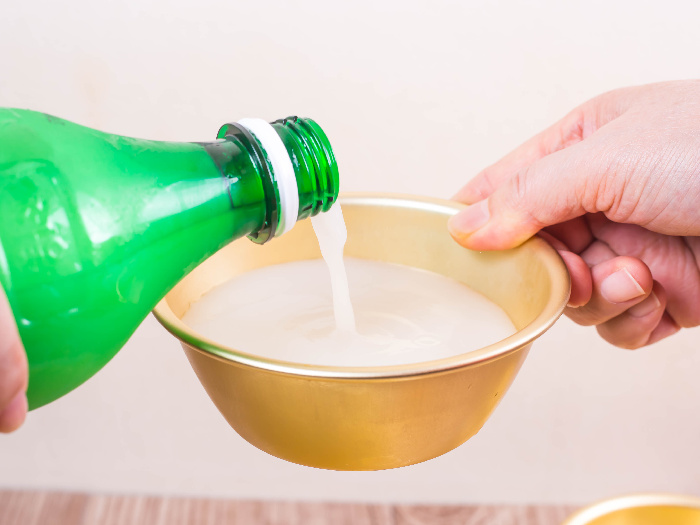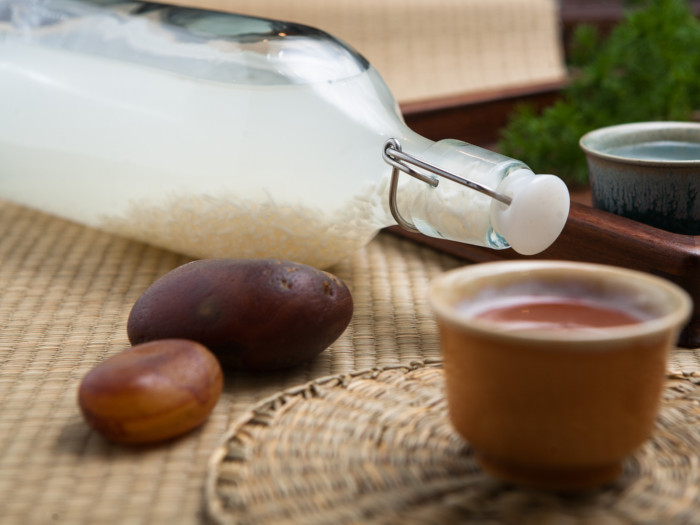You may be unaware of rice wine if you haven’t traveled to Asia or tried many exotic forms of alcohol. You can find different versions of this drink in different Asian countries, where they are known by their local names such as sake in Japan, makgeolli or takju in Korea, and brem in Bali.
What is Rice Wine?
Although labeled a “wine,” rice wine bears more of a similarity to beer, as it is created from fermented rice or grains, as are most other beer varieties. As such, it is not gluten-free. It is consumed throughout South and East Asia, in many different cuisines and drinking. Rice wine is available in a variety of flavors – some are sweet, while others are light – so it is nearly impossible to describe the beverage at once – akin to telling someone who has never drunk beer what all beers taste like. [1]
The most popular types worldwide are Shaoxing, mirin, and sake. Rice wine is often confused with rice wine vinegar (also called rice vinegar), which has been further fermented into acid for cooking and tastes a bit sweeter than traditional white vinegar. Rice wine meant for cooking can usually be stored for a few years in a cool, dark place (such as a cabinet) and still keep well. Possibly high-quality types are intended for drinking, such as sake. They may taste best when drunk shortly after they’re sold, and should be consumed quickly after the bottle has been opened. [2]

Rice wine can be milky or clear distilled wine. Photo Credit: Shutterstock
Nutrition Facts & Alcohol Content
It is stronger than beer or most wines, coming in at about 18%-25% alcohol by volume (ABV). So, do enjoy it responsibly. In terms of calorie and carb content, 100-grams of rice wine contains 134 calories and 5 grams of carbohydrates. However, the calorie content varies with the amount of alcohol content – the higher the alcohol content, the higher the calories. [3]
Serving Size : Nutrient Value Carbohydrate, by difference [g] 5 Energy 134 Alcohol, ethyl [g] 16.1 Water [g] 78.4 Calcium, Ca [mg] 5 Iron, Fe [mg] 0.1 Magnesium, Mg [mg] 6 Phosphorus, P [mg] 6 Potassium, K [mg] 25 Sodium, Na [mg] 2 Zinc, Zn [mg] 0.02 Copper, Cu [mg] 0.01 Selenium, Se [µg] 1.4 Sources include : USDA [4]
Benefits
Various research studies conducted on this beverage in East Asia suggest that it is potentially beneficial for health in certain ways:
- May boost immunity and metabolism.
- The presence of lactic acid and bacteria in rice wine makes it a probiotic, thereby promoting stomach health. [5]
- May serve as an anti-bacterial substance [6]
- May help slow down the signs of aging and protect against the harmful effects of UV rays. [7]
To fully understand the possible therapeutic benefits of this beverage, a larger number of clinical trials are required. Since it has a high alcohol content, the risks of drinking in excess far outweigh its benefits. Moderation in intake is key.
How to Make?
It’s easy to make rice wine at home. It is a good substitute for sake or sweet mirin and is often used in East Asian cooking. All you need are two ingredients and plenty of patience to see it ferment. Just follow the steps mentioned below.

How To Make Rice Wine: Easy Recipe
Ingredients
- 2 cups glutenous “sticky” rice
- 1 ball Asian rice yeast
Instructions
- To make rice wine, cook the rice according to package directions, making sure it is sticky when done.
- Spread the rice out on a baking sheet to cool.
- Break up the yeast ball in a small bowl using a spoon. Spoon a layer of room-temperature rice into the container and sprinkle some yeast on top, then repeat the process until all the yeast and rice have been layered in the container.
- Seal the container and wait. Place the container in a warm place for five days. If you check it daily, you can see the yeast will be breaking down the rice. The resulting liquid, the beginnings of the wine, will pool at the bottom of the container. You can store it in a bottle.
- Rice wine is consumed in very small amounts, about 6 ounces, due to its high alcohol content.
Rice Wine vs Mirin vs Sake
Both mirin and sake are types of rice wine
- Mirin is typically used as a cooking wine in Japanese cuisine
- Sake is famous for being served in Japanese restaurants worldwide, particularly accompanied by sushi
Word of Warning: Alcohol can impair your judgment, a particularly dangerous reality when operating heavy machinery. Women who are pregnant should not consume alcohol, as it can cause fetal alcohol syndrome in infants. [8]
According to the Centers for Disease Control and Prevention, people who should not drink alcohol include women who are pregnant, individuals younger than 21 years of age, and people who are recovering from alcoholism or cannot control the amount they drink. Also, it should be avoided by people who are planning to drive or any other activity that required focus and skill. However, different countries have different rules on alcohol purchase and consumption. [9]
